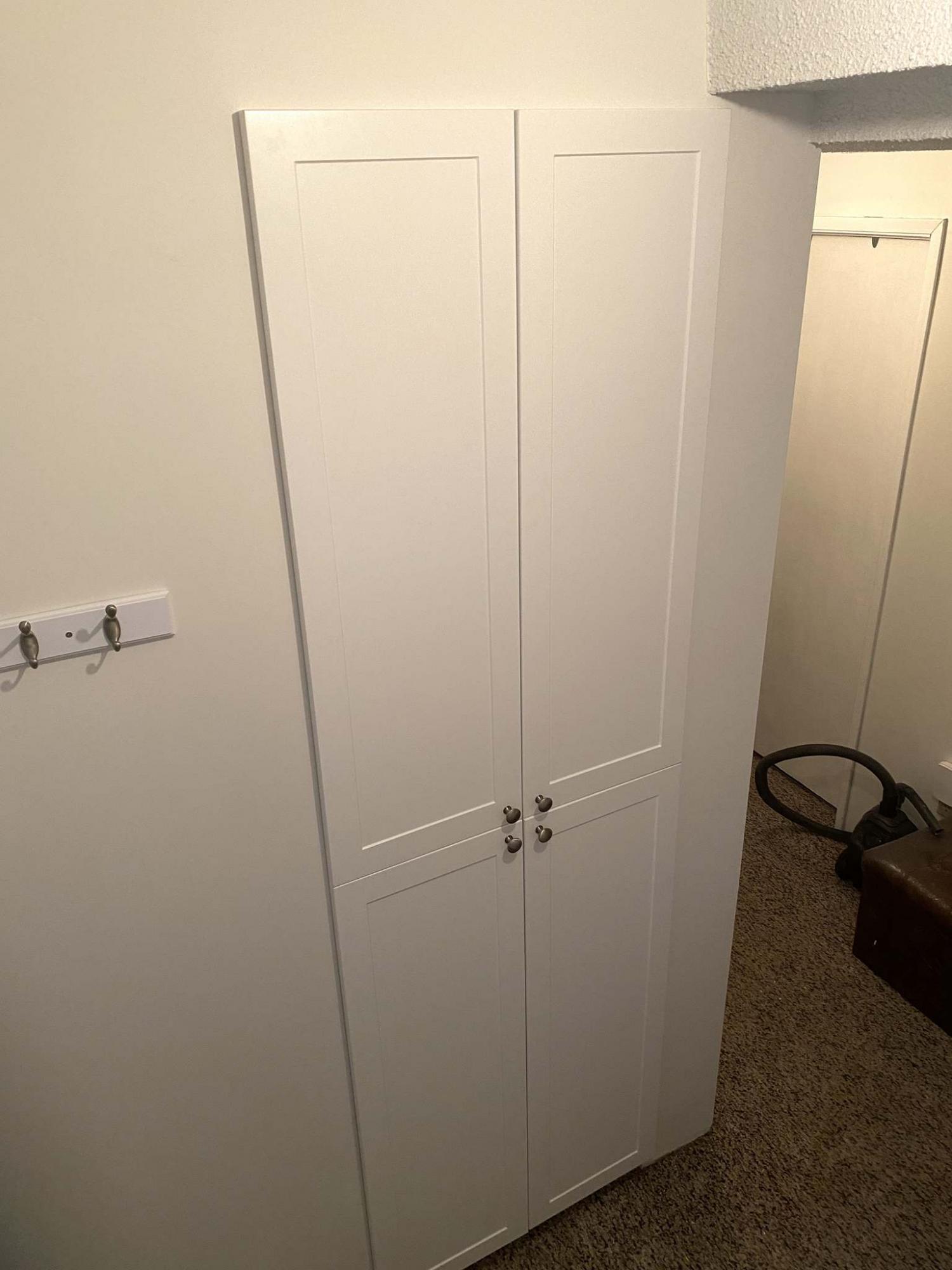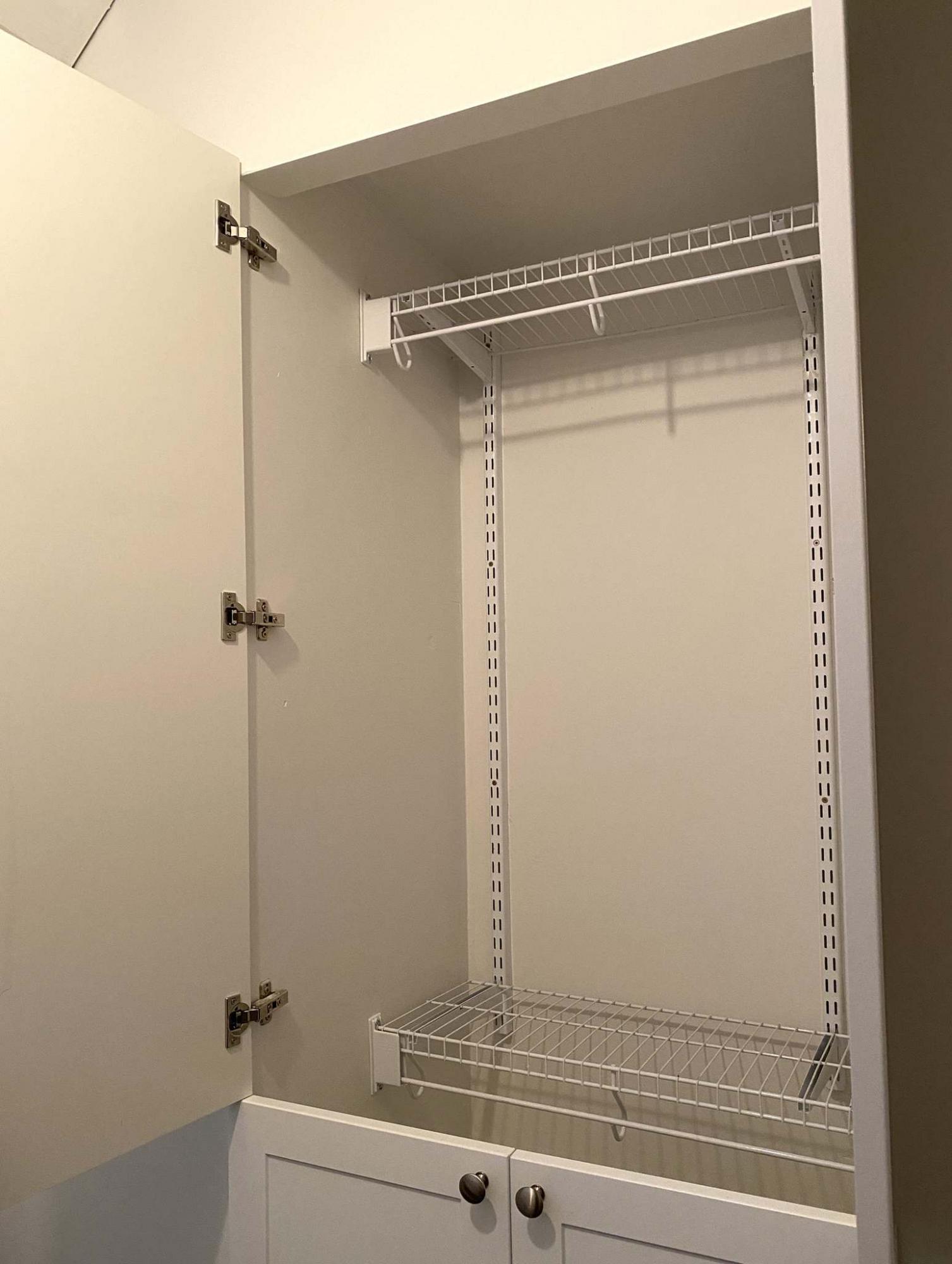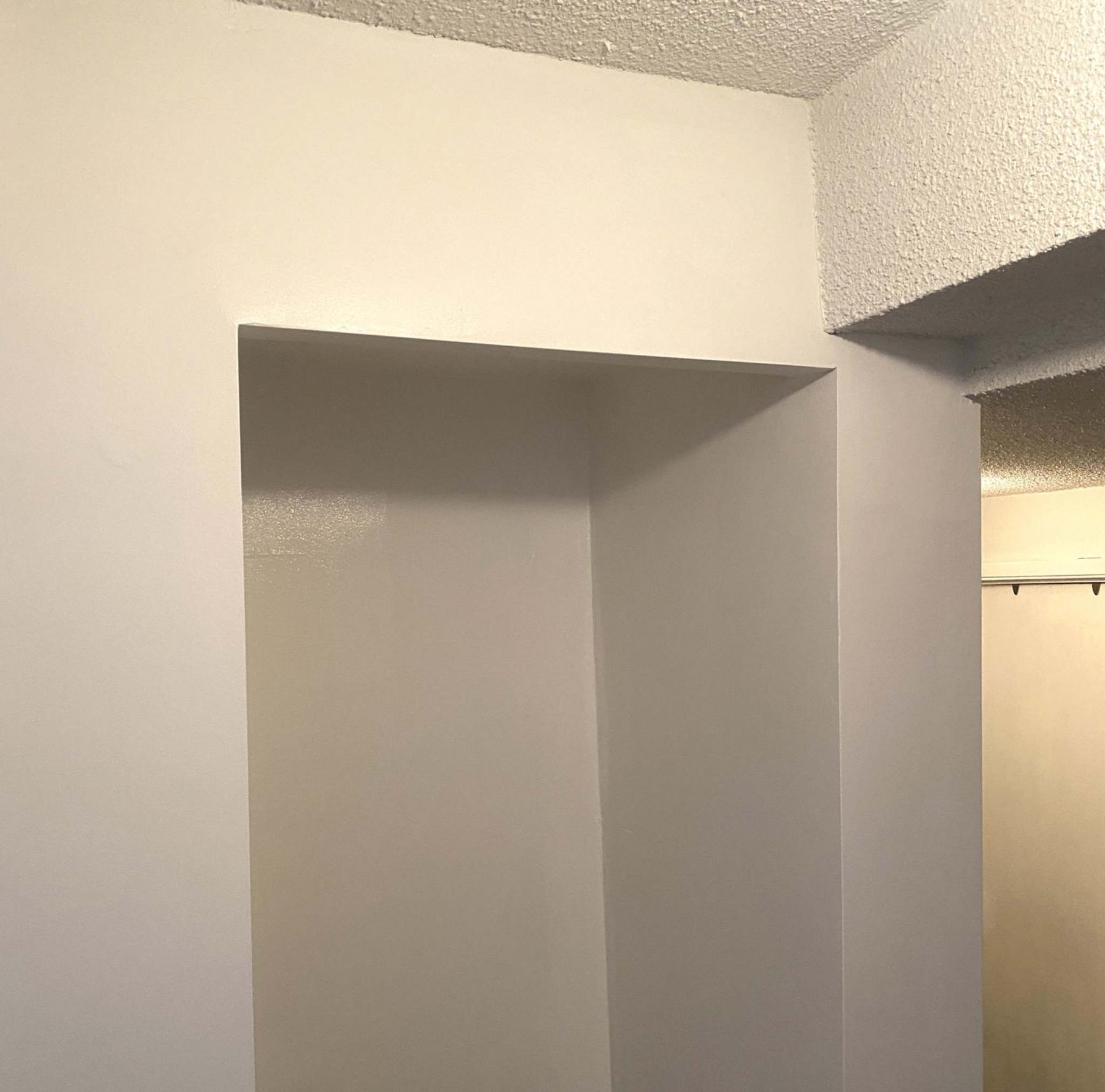
Photos by Marc LaBossiere / Winnipeg Free Press
Custom cabinet doors from Cabinet Corner were carefully installed along both inside vertical edges of the drywalled closet cavity.

Two custom clothes-hanger rods with mesh shelves help maximize the space.
Although renovations have remained steady of late, there was a period at the onset of the pandemic last March that resulted in just under three months of downtime.
As a result, the jobs scheduled during that period were for the most-part postponed until my schedule would allow them to be squeezed back into the mix. One of the smaller jobs was a closet refurbishmenty that finally got the attention it sorely needed.
Nothing more than a cavity at the base of the stairs with a few uneven planks atop a crudely built wooden frame within, this lower-level inset space had served as an overflow closet for winter coats, mitts, and toques for many years. Following several upgrades to most rooms on the main floor, the homeowner diverted her focus to a few smaller lingering tasks that could now receive the proper attention. Although the list was diverse, most tasks could be achieved quickly and easily. The lower-level closet upgrade on the other hand, required some thought.
In late 2019, a cabinet base and two sets of cabinet doors which once hung, would appear as French-style doors, were custom ordered from Richard Rochon at Cabinet Corner. These doors, which match the upstairs pantry armoire doors, were constructed in such a way so they could be mounted to the inside of the drywalled closet cavity instead of the inner face of a cabinet. As such, it was imperative that the door measurements were accurate to within 1/4-inch across, as the opening of the cavity is a set width. Furthermore, the cabinet hinges by nature allow the outside edges of the doors to overlap slightly the perimeter edge of the closet cavity’s finished opening. A such, the total width of the doors would be 1/2-inch wider than the opening, on either side. The cabinetry items were manufactured, and subsequently delivered to the jobsite in early 2020.
Then of course, the pandemic struck — and the project was halted indefinitely. Throughout the course of 2020, once renovations had regained momentum again in May, I did my best to squeeze in as many of the postponed jobs as my schedule would allow. It wasn’t until this past month that everything has finally been completed, this lower-level closet being the last project on the list. To achieve this during the week between completing a previously pre-scheduled job and the next job on my calendar, drastic steps were taken to ensure a timely process of steps.
Although the most accurate measurements were taken, the idiosyncrasies of drywall and framing can wreak havoc on hanging multiple cabinet doors — all doors once hung must close snuggly and in line in order to appear correct. The front face of this closet cavity was not in line, causing a discrepancy of more than an inch along the upper edge where the left side met the stippled beam. To align the entire face, a strategic placement of framing and drywall was introduced to both lower the top edge of the cavity to a height that would satisfy the door height requirements, as well as realign the face. A similar adjustment was made along the left side to bring it to plumb and level with the right side. The area was given a first coat a taping mud and corner bead along the enhanced outer edges both top and left. To expedite drying time a high-speed fan was utilized.
The following two days, finishing coats were applied in the morning and again later those afternoons, provided the morning coats had dried sufficiently to allow it. This process accelerated the job by two days, allowing the sanding, priming, and painting stages to occur by the fourth day, instead of the sixth. And once the painting steps were concluded, the final tasks of introducing the closet racks and doors could begin.
The cabinet base was maneuvered into place, and caulked along the visible edges that meet drywall. Two separate clothes-hanging rods (that double as upper wire mesh shelves) were then strategically placed along the two main vertical supports brackets affixed to the back wall — one at the highest point of the brackets and another at the lowest, the midway point of the closet’s overall height. The doors were then hung one by one, carefully measuring exactly where to position each door to maintain square and level despite the cavity opening being anything but. The doors’ hinges adjustments were refined bit by bit until every door was both level unto itself, and to the doors adjacent. The four knobs were then installed at the four corners where all doors meet, and the closet was officially ready for use.
This minor upgrade renders a previously partially useful closet cavity into a fully functional, eye-pleasing storage space. Not only has the introduction of the wire-mesh clothes hanging system doubled the overall usable space, but the cabinet doors on this lower-level closet now match the armoire doors of the pantry on the main floor. At first reveal, the looks on my clients’ faces said it all. After waiting 25 years to finally tackle this closet facelift, it appears the extra 10 or so months in delays due to the pandemic didn’t seem to matter.
BossEnterprise@outlook.com




